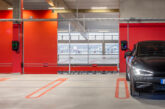
Destinations that have not switched on to providing Electric Vehicle charging risk losing out to rival attractions that have installed chargepoints.
EV drivers will increasingly switch from hoping there will be EV charging at shopping centres, leisure attractions, town and city centre car parks, and other destinations. They will expect it, and many will steer clear of destinations where they can’t plug in.
The UK recently smashed through the 60,000 milestone for public charging devices and is on track to reach 100,000 as soon as next year. Zapmap clocked the 60,000 number in April1, just six months after the UK reached 50,000 public chargepoints.
And Zapmap reckons the 100,000 mark could be seen in August 2025 if the pace of installations keeps up. An average of 1,900 are being installed each month so far in 2024.
The current 61,232 and counting chargepoints have more than 92,000 connectors (some chargepoints, such as CTEK’s CC3, have dual outlets and can charge more than one EV at once).
The public chargepoints are a mix of rapid, fast and slow devices. Slower chargepoints remain the largest number. Slow and fast chargers make up more than 80 per cent of public chargepoints, and they are the mainstay of the destination EV charging landscape.
EV-driving visitors to retail and leisure destinations may want to park and charge for an hour or more, and in that time can get a useful top-up from a slow charge or a more substantial refill from a fast one.
For destinations still considering whether to install EV charging for the public, or for those who have a small number of chargepoints and are weighing up expansion, here’s another big number: there are already more than 1.1 million fully electric cars (BEVs) on UK roads.
Add in the 650,000-plus plug-in hybrids (PHEVs) and those destinations with no or insufficient EV charging are making themselves less attractive to an awful lot of potential visitors. And with a purchase price premium still attached to BEVs, it is a relatively wealthy audience to dissuade from visiting.
And with the funding options ranging from fully owned and operated, to joint agreements with charge point installation and operating companies, to simply hosting chargepoints fully funded by the installer/operator, there is a model that’s affordable for any destination.
As well as being a good business decision, installing EV charging is a good decision for the country and for the environment. The more public charging that is available, the more the public will be encouraged to switch to electric, with all the accompanying benefits for the climate and for air quality.
Destinations wondering if they can afford to install EV chargepoints should be asking themselves if they can afford not to.
By Daniel Forsberg, CTEK’s Marketing Manager EVSE
For more insights into how CTEK supports your transition to EV charging, click here
Read more industry feature articles here








